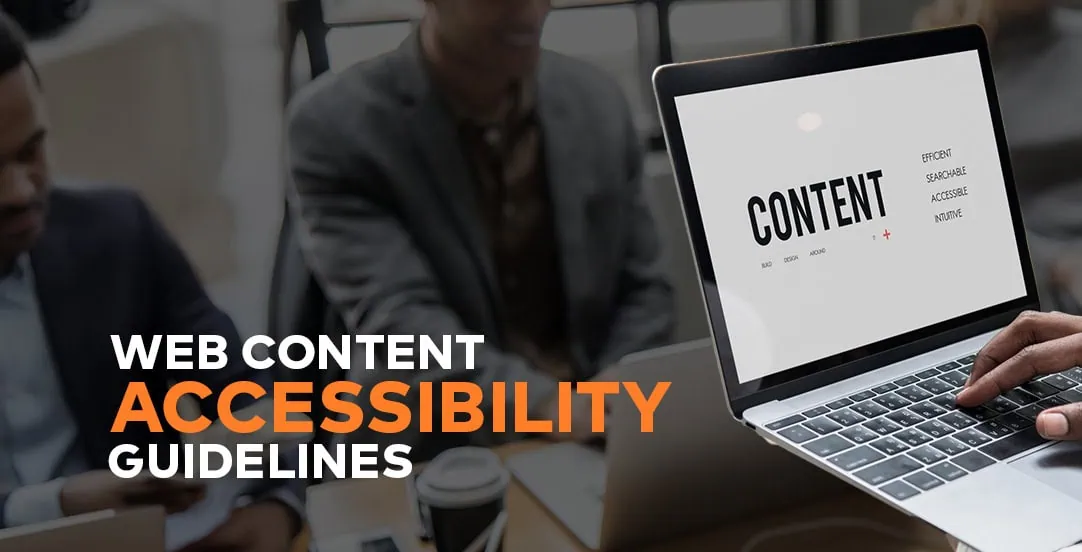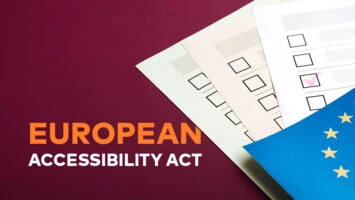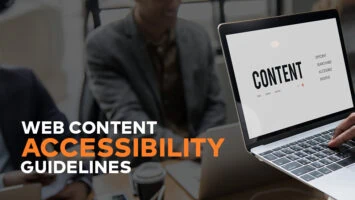WCAG 2.1 Web Content Accessibility Guidelines – Basic Information for Online Businesses

If you run an online business, then the Web Content Accessibility Guidelines (WCAG) 2.1 – a set of international standards and rules for web content accessibility – should be well known to you. In this article, we have prepared a guide that will help you check if your business follows current legal requirements.
WCAG 2.1 was created by the Web Accessibility Initiative (WAI), which is part of the World Wide Web Consortium (W3C). Their goal is to make web content accessible to people with different types of disabilities, including visual, hearing, motor, cognitive, and neurological. WCAG 2.1 is an update of version 2.0 and includes new technologies and the needs of mobile device users.
Basic principles of WCAG
WCAG is based on four main principles: perceivable, operable, understandable, and robust. What does this mean in practice? The content provided to users must be available to their senses and allow interaction. It’s also important that the interface and content are intuitive and easy to understand. This includes clear error messages and predictable navigation. A key point is that content should work reliably on different devices and technologies, including screen readers and mobile phones.
WCAG compliance levels
The WCAG guidelines have three levels of compliance: Level A, which includes basic accessibility features; Level AA, which involves implementing solutions that remove the most common barriers for people with disabilities; and Level AAA, which represents the highest level of accessibility
Most important changes in WCAG 2.1
WCAG 2.1 adds 17 new success criteria to version 2.0. These focus on the needs of people with low vision, cognitive difficulties, and mobile device users. The most important changes include:
- New input methods – Support for touch interfaces and alternative inputs like Braille keyboards or handwriting.
- Contrast and text scaling – Graphics must have good contrast, and text should wrap and enlarge correctly for people with low vision.
- Form design – Forms should help users with cognitive difficulties enter data correctly.
- Interaction with mobile devices – Support for both landscape and portrait views, and options to turn off extra motion sensors.
Public institution requirements
According to the law on digital accessibility of websites and mobile apps for public institutions, which came into force on May 23, 2025, all public websites and apps must meet the WCAG 2.1 standard at the AA level. Public institutions also need to do regular audits and make sure their content meets accessibility rules.
In our article on the European Accessibility Act 2025, we explore how upcoming regulations will impact the e-commerce industry — especially in relation to existing standards like WCAG 2.1.
Benefits of Applying Web Content Accessibility Guidelines
Using WCAG guidelines brings benefits both for people with disabilities and for general users. Websites that follow WCAG are easier to use and more functional. This improves the image of an organization as one that supports equal opportunities and fights discrimination.
WCAG 2.1 is not just a technical standard but also a statement of equal opportunities in the digital world. Applying these guidelines is a step towards a more inclusive society. It’s also important to know that the EAA directive, which applies to the broader online business sector, is also based on WCAG principles. This means that not only public institutions but the entire digital industry should pay attention to the accessibility of their websites.
More information about WCAG requirements: WCAG 2.1 – obowiązujące wytyczne w zakresie równości szans i niedyskryminacji – PARP – Centrum Rozwoju MŚP


















